How to play Sungka step-by-step: rules and mechanics of the game
People often say that to honestly know a country is to immerse yourself into its custom and tradition. Speaking of which, the Philippines is a country full of rich customs and traditions. From its language to its local cuisine and delicacies, one can say that the country is a gem. If you think that being able to visit the Philippines’ picturesque sceneries and eating its local food varieties makes you a real Filipino at heart, you are wrong. Filipino local games, like Sungka, will surely make you fall in love more with the country.
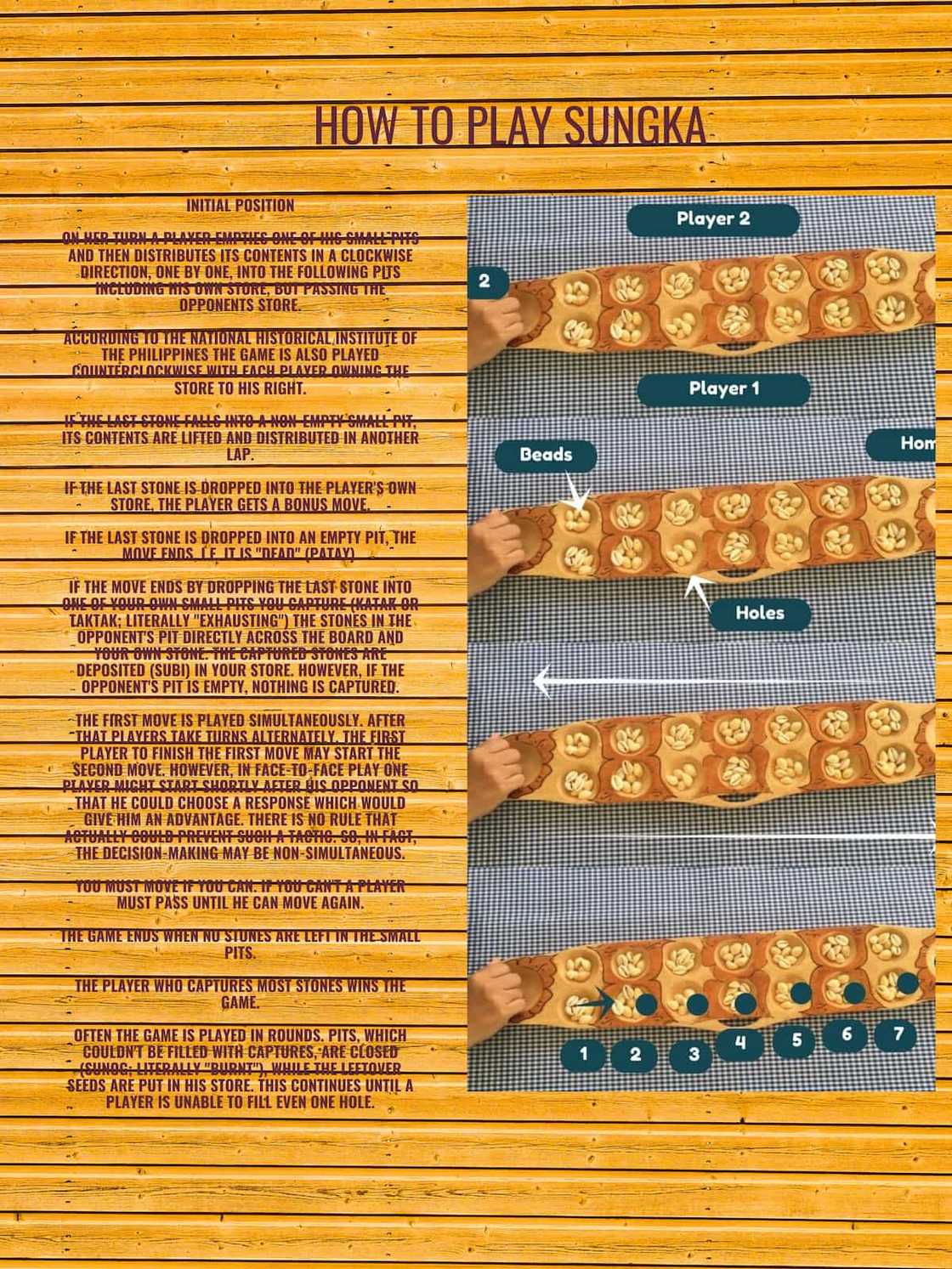
Source: Original
Sungka, pronounced as Soong-kah, is a two-player turn-based board game wherein the players compete to obtain more stones than the other. The game unleashes the competitiveness of a person. Somehow, the Sungka game seems to be a mind game. It is also known to improve the mathematical thinking and observation skills of an individual. So, are you excited to learn how to play Sungka?
Sungka history
Sungka is an ancient Filipino game. Its history can be traced back to the 17th century. The game was first described by the Jesuit priest Father José Sanchez in his dictionary of the Bisaya language (Cebuano) in 1692 as Kunggit. Father José Sanchez, who had arrived in the Philippines in 1643, wrote that the game was played with seashells on a wooden, boat-like board. The Aklanon people still call the game Kunggit.
Sungka is the Philippine version of the mancala game. Mancala is a family of board games played around the world. The term is derived from the Arabic word naqala, which means “moved.”
Nevertheless, it is a genuinely Philippine game despite its similarity to the Indonesian Congkak. It’s interesting to note that Filipinos play this game wherever they may be. Even Philippine migrants in Germany, Austria, America, Taiwan, Macau, and other countries bring this traditional game.
Sungka mechanics
The mechanics of the game is simple and easy. Before playing, one must have pebbles, marbles, or seashells, and the most important thing, the Sungka board.
To become a legit Sungka player, you should be familiar with the mechanics of the game. So, we listed down below the Sungka rules and mechanics.
To begin a new game, you must place the board horizontally between the two players so that each player has seven houses/holes in front of him, and the heads should be at the far ends to the left and right. Each player's head is the hole/pit to his extreme left. Each player controls the seven holes on his side of the board and owns the "head" to his right. The goal is to accumulate as many pieces in your own "head."
Each player has 49 game pieces (shells, marbles, pebbles or seeds) equally distributed to each of their holes - seven pieces in every hole - except the heads which remain empty.
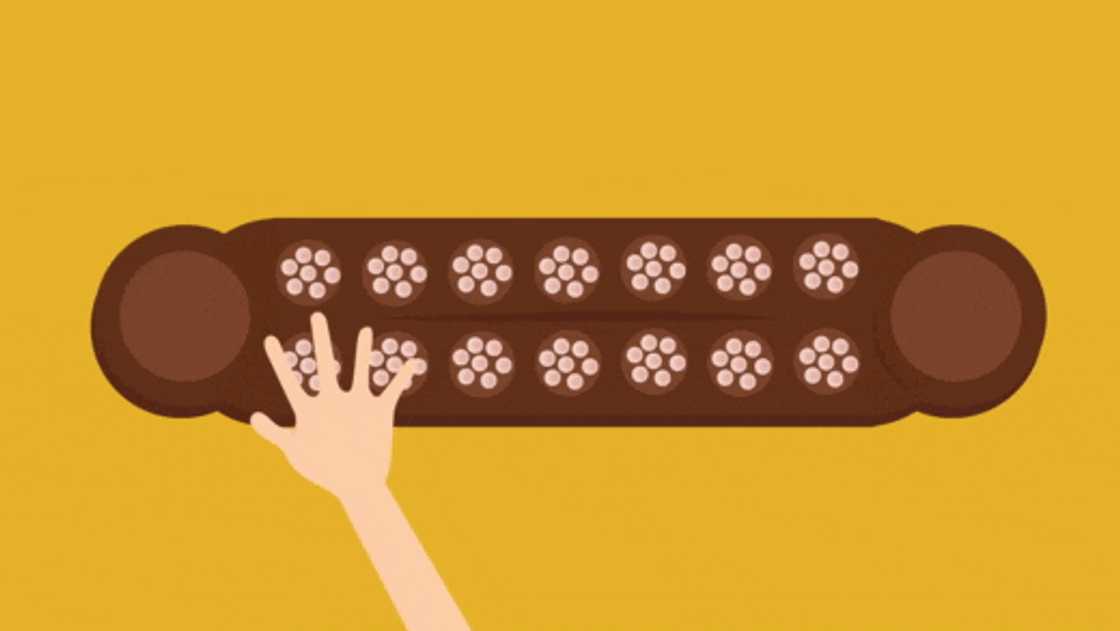
Source: Original
For the first turn, a player may decide which of the seven houses directly in front of him (on his side of the board) he wishes to begin with. He picks up all of the shells from his chosen hole, and he should then move his hand around the board in a clockwise-direction, dropping one shell in each hole or head he passes over, including all of the holes on both sides of the board and the player's head but NOT the opponent's head.
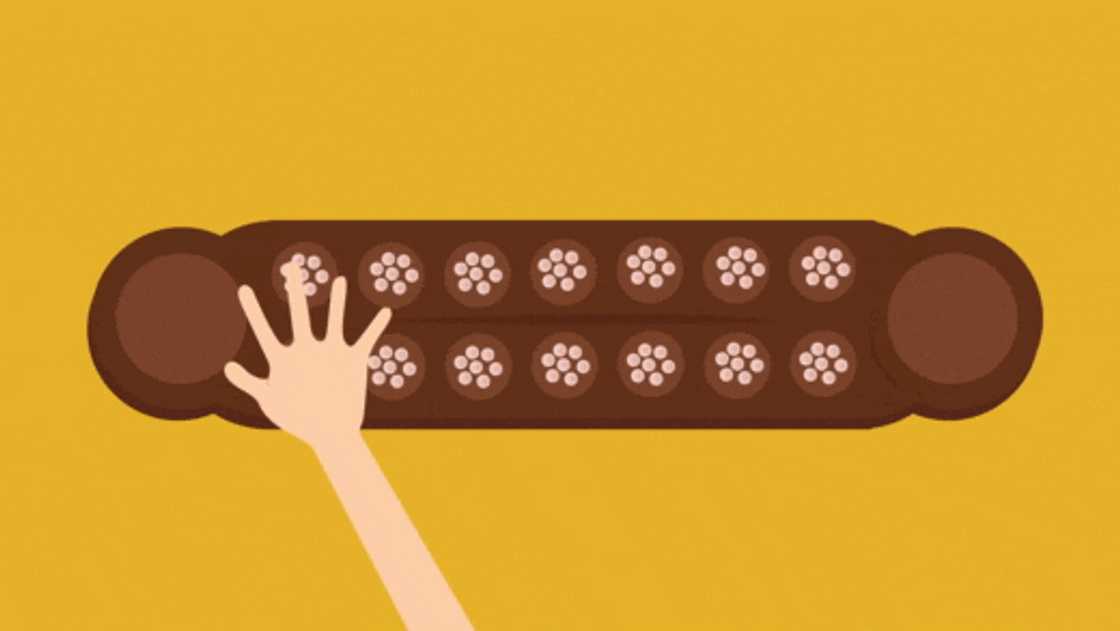
Source: Original
Where you release the last shell from your hand is very important, as it dictates whether you may continue your turn. If you land in your head, then you may continue your turn from any of your holes.
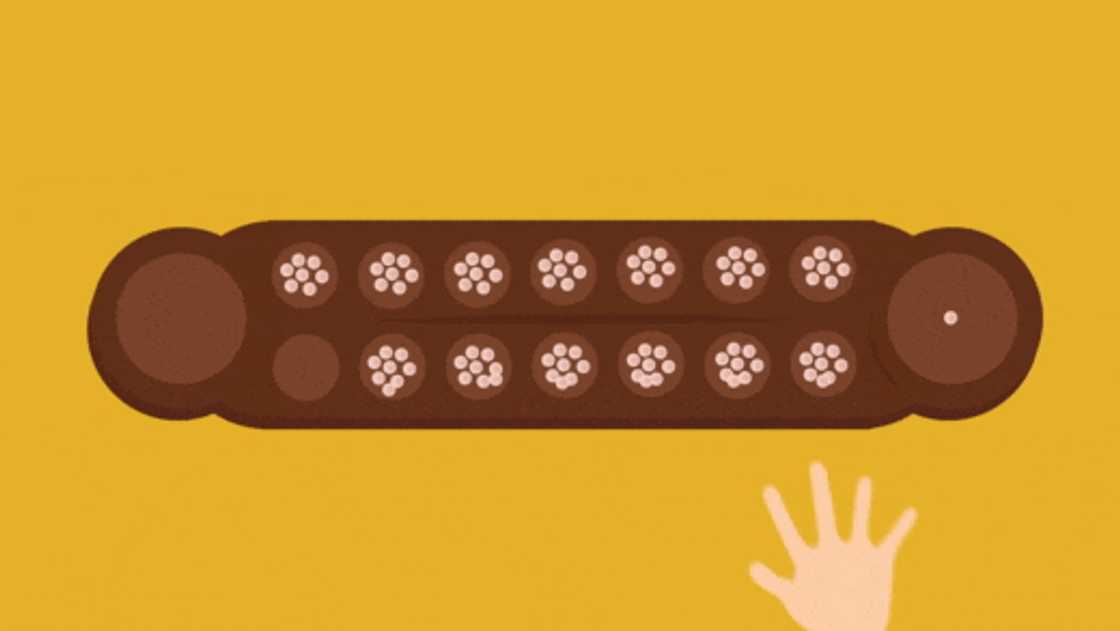
Source: Original
If you drop your last shell into a hole that already had shells in it, you may pick up every shell in that hole (including the one you dropped) and continue your turn.

Source: Original
The player's (current) turn ends when the last piece falls into an empty hole, whether on the player's side or the opponent's side. If this happens in one of your holes, on your side of the board, then you may claim all the shells in the hole directly opposite (from your opponent's side of the board) and drop them in your head, although the turn is still over.
Both players play simultaneously, and it can be quite hectic. Once a player has ended their first turn, he must also wait for the opponent to complete his turn, and from that point on, players take it in turns to play their turns.
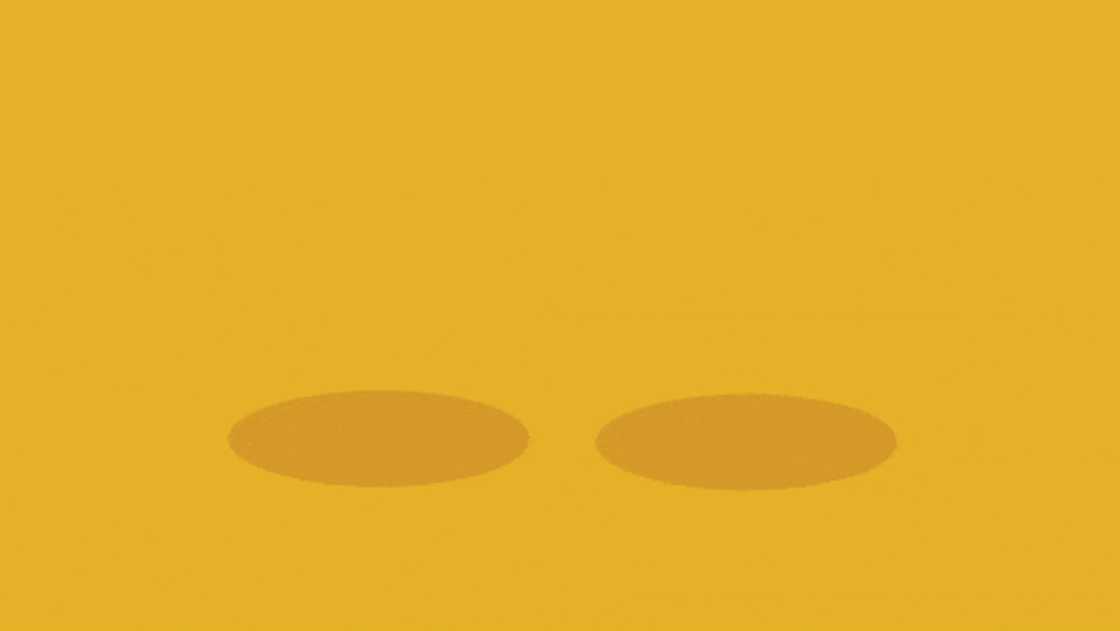
Source: Original
The game ends when no pieces are left in any hole on both sides of the board. The players now count the number of pieces in their own "head" and see who has won.
Sungka competitions
The game became an important means for creating an identity, particularly for Philippine migrants. Due to its complexity, Sungka competitions are being held not only in the Philippines but also in some countries.
In the Philippines, the biggest competition is held every year during the Kadayawan Sports Festival in Davao.
The Philippine Embassy compound in Pretoria, South Africa, hosted the First Sungka Game Competition. It was held during the ASEAN Games and Sports, in May 2006. The said competition declared six winners from Vietnam, Malaysia, the Philippines, and Indonesia.
In 2008, the Philippine Language and Cultural Association of Australia (PLCAA) organized a Sungka competition. It was held at the Sydney Regatta Centre in Perth.
On the same year, the first Sungka festival and tournament was organized in Vienna, Austria. It was held at the Völkerkunde Museum. The contest aimed at raising the awareness of Filipinos and Austrians about the unique Philippine game. The organizers also wanted for Filipino children born in Austria to learn about their cultural heritage.
A variant which takes a lot of manual dexterity is called Chopstick Sungka. The counters are not moved by hand but with chopsticks. Alumni of Silliman Univesity, located in Dumaguete City (Philippines), who now lives in British Columbia (Canada), had a Chopstick Sungka competition at Cultus Lake in 2012.
Is sungka a Filipino traditional game?
Yes, Sungka is a traditional game that originated in the Philippines. It is also known by various other names such as Congkak, Dakon, and Mancala, which are played in different regions around the world. However, the specific rules and variations of the game can differ from one country to another. In the Philippines, Sungka is a popular board game that is often played by children and adults alike.
The Sungka game is indeed proof of how full the culture, tradition, and history of the Philippine is. We hope that you will be able to try playing this fun game.
Source: KAMI.com.gh







